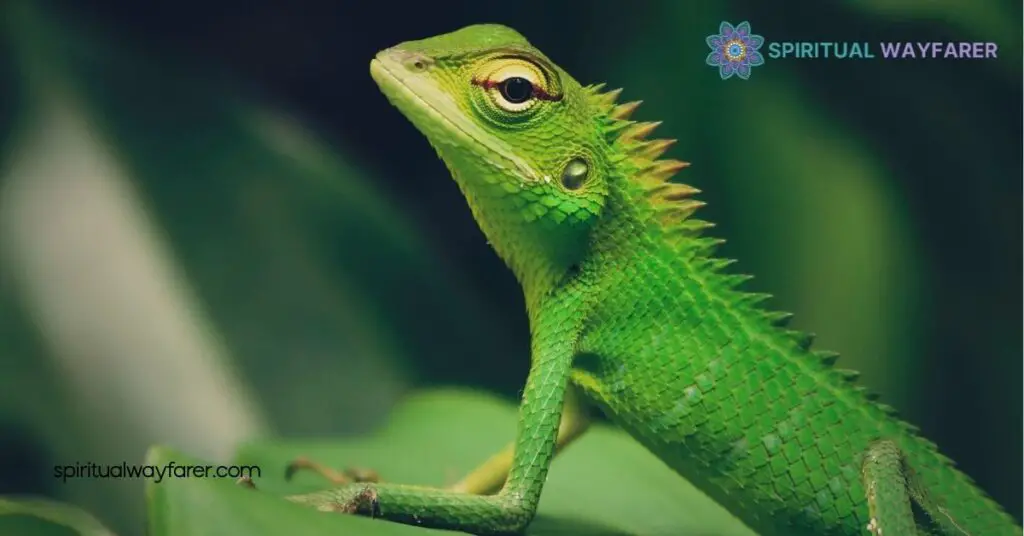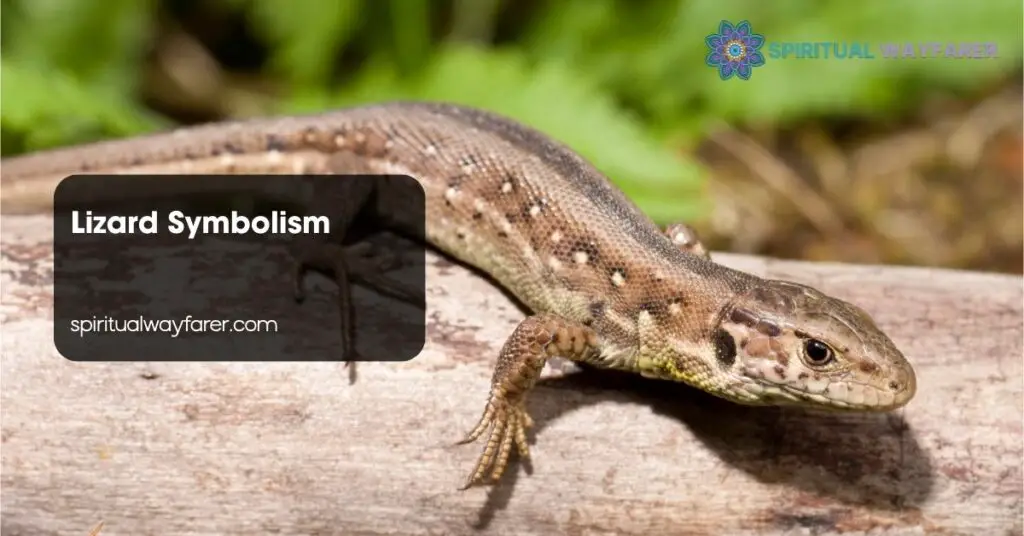Have you ever wondered what lizards symbolize in different cultures? We investigate into the intriguing area of lizard symbolism to uncover the hidden meanings behind these incredible creatures. From ancient myths to modern interpretations, lizards represent resilience transformation and adaptability.
Join us as we explore how lizards embody various traits and messages across diverse traditions. Whether you’re intrigued by their ability to regenerate tails or their stealthy movements, understanding lizard symbolism can offer profound insights into personal growth and spirituality. Let’s uncover the secrets our scaly friends have to share.
Understanding Lizard Symbolism

Lizards embody powerful symbols across different cultures. Their characteristics reflect themes of resilience and transformation.
Historical Perspectives
We find lizards prominently featured in various mythologies and traditions. Ancient Egyptian culture saw lizards as guardians symbolizing protection. Native American lore regarded lizards as signs of change and adaptability. In Eastern philosophies, lizards represent longevity and survival, often appearing in art and spiritual narratives.
Biological Significance
Lizards’ biological traits enhance their symbolic meanings. Tail regeneration illustrates resilience in overcoming setbacks. Stealthy movements demonstrate adaptability to diverse environments. Also, lizards’ ability to thrive under harsh conditions emphasizes resourcefulness and flexibility.
Cultural Interpretations
Lizards hold diverse meanings across various cultures, reflecting their adaptability and resilience.
Ancient Civilizations
Native American Cultures
In Southwest Native American cultures, lizards symbolize prosperity, survival, and healing. They thrive in harsh desert environments, and their ability to shed and regrow tails associates them with healing and resurrection. The Navajo and Hopi tribes link lizards to health, spiritual guidance, and the determination of human physical traits.[1][3][5]
Ancient Egyptian and Roman Mythology
Egyptian mythology regards lizards as symbols of fertility, heat, and heavenly wisdom. They embody knowledge and protection, surviving in extreme conditions. Roman mythology connects lizards to the cycle of life and death. The god Mercury is sometimes depicted with chariots pulled by lizards, reinforcing their association with transformation and continuity.[3][5]
Modern Cultures
In contemporary societies, lizards represent various concepts, including agility and adaptability. They feature prominently in art and literature, symbolizing transformation and survival. In some Eastern philosophies, lizards embody longevity and regeneration, aligning with their biological traits. Also, in popular culture, lizards appear in films and media as characters that navigate complex environments, reinforcing their image as resourceful and resilient creatures.
Spiritual and Mythological Meanings

Lizards embody rich spiritual and mythological significance across diverse cultures. Their symbolism reflects themes of regeneration, adaptability, and introspection.
Symbolism in Religion
Lizards represent regeneration and transformation in many religious traditions. Their ability to shed skin and regrow tails symbolizes renewal and healing, illustrating the power to overcome challenges and adapt to new environments[^1][^2][^4]. In Native American spirituality, lizards signify resilience and survival, revered for their capacity to thrive in harsh conditions and their healing attributes[^2][^4][^5]. Ancient Egyptian mythology associates lizards with fertility and wisdom, viewing them as guardians and symbols of longevity. Roman beliefs connect lizards to the cycle of life and death, emphasizing their role in representing the continuous process of renewal[^1][^3].
Folklore and Legends
Folklore across various cultures highlights lizards as symbols of adaptability and survival. Native American legends often depict lizards as protectors and healers, honoring their ability to regenerate and survive adverse conditions[^2][^4][^5]. In Eastern philosophies, lizards are seen as embodiments of longevity and transformation, frequently appearing in traditional stories that emphasize personal growth and spiritual awakening[^1][^3]. Also, many myths portray lizards as creatures that bridge the physical and spiritual realms, encouraging individuals to explore their subconscious and inner visions[^2][^5]. These narratives reinforce the lizard’s role as a powerful symbol of introspection and resilience.
[^1]: Source 1
[^2]: Source 2
[^3]: Source 3
[^4]: Source 4
Lizard Symbolism in Dreams

Regeneration and Transformation
Lizards shedding their skin in dreams signify personal growth and renewal. This act represents the ability to leave behind old habits, paving the way for new beginnings. When a lizard regenerates its tail, it highlights resilience and the capacity to overcome challenges.
Adaptability and Survival
Dreaming of lizards underscores your adaptability in facing life’s obstacles. These creatures symbolize the skill to navigate through changing environments with ease. Seeing a lizard in your dream reflects your inherent resilience and flexibility in stressful situations.
Emotional and Intuitive Significance
Lizards in dreams enhance your intuitive awareness and emotional insight. They indicate a heightened sensitivity to your surroundings and inner feelings. Encountering a lizard may encourage you to trust your instincts and deepen your emotional understanding.
Lizard Symbolism in Art and Literature

Lizards frequently appear in visual arts, embodying themes of resilience and transformation. Artists incorporate lizards to represent regeneration, inspired by their ability to shed and regrow tails. For instance, Native American jewelry often features lizard motifs, symbolizing healing and prosperity. These designs reflect the cultural significance of lizards in Southwest Native American tribes like the Hopi and Navajo.
In literature, lizards serve as powerful symbols of survival and adaptability. Classic myths and modern narratives alike use lizards to illustrate characters undergoing personal growth or overcoming challenges. Ancient Egyptian texts depict lizards as guardians, intertwining their presence with themes of protection and divine wisdom. Similarly, Greco-Roman stories associate lizards with the cycles of life and death, highlighting their role in conveying deeper philosophical concepts.
Contemporary artists and writers continue to draw inspiration from lizard symbolism. In modern fantasy literature, lizards often represent transformation and longevity, aligning with their mythological roots. Visual artists explore lizard imagery to convey messages of renewal and endurance, maintaining the rich symbolic heritage across different cultures. By integrating lizards into various art forms, creators honor their multifaceted symbolism and enduring legacy.
Examples of Lizard Symbolism in Notable Works
- Native American Jewelry: Features intricate lizard designs representing healing and prosperity.
- Ancient Egyptian Art: Depicts lizards as symbols of protection and divine wisdom.
- Greco-Roman Mythology: Uses lizards to illustrate the cycle of life and death.
- Modern Fantasy Literature: Incorporates lizards to signify transformation and longevity.
- Contemporary Visual Arts: Utilizes lizard imagery to express renewal and endurance.
Symbolic Traits Represented by Lizards
- Resilience: Demonstrates the ability to adapt and survive in harsh conditions.
- Transformation: Represents personal growth and the shedding of old habits.
- Protection: Acts as a guardian figure in various cultural artworks.
- Healing: Symbolizes renewal and the power to overcome obstacles.
- Longevity: Embodies enduring strength and lasting wisdom.
By integrating these symbolic traits, art and literature leverage the rich cultural heritage of lizards, offering deeper insights and connections to their symbolic meanings.
Conclusion
Exploring lizard symbolism opens a window into the profound connections between nature and our cultural narratives. These resilient creatures teach us about adaptability and the power of transformation in our own lives. By embracing the lessons lizards embody, we can navigate challenges with greater ease and foster personal growth. Their enduring presence in myths and art inspires us to appreciate the subtle yet important roles they play in our collective consciousness. As we continue to uncover the layers of their symbolism, lizards remind us of the importance of resilience, renewal, and the continuous journey of self-discovery. Embracing their symbolism enriches our understanding of both the natural industry and our inner landscapes, guiding us toward a more balanced and insightful existence.
Frequently Asked Questions
What do lizards symbolize in various cultures?
Lizards symbolize resilience, transformation, and adaptability across different cultures. They represent traits such as survival, regeneration, and longevity. In some traditions, lizards are seen as guardians, healers, and symbols of personal growth, embodying the ability to overcome challenges and transform.
How are lizards viewed in ancient Egyptian mythology?
In ancient Egyptian mythology, lizards are symbols of fertility and wisdom. They often appear in art as guardians, protecting sacred spaces and representing the cycle of life and death. Lizards embody the qualities of regeneration and continuity, reflecting their important role in Egyptian beliefs.
What is the significance of lizards in Native American cultures?
In Native American cultures, particularly in the Southwest, lizards symbolize prosperity, survival, and healing. Their ability to thrive in harsh environments and regenerate their tails represents resilience and the power to overcome adversity. Lizards are also linked to spiritual healing and protection.
How do lizards represent transformation and regeneration?
Lizards symbolize transformation and regeneration through their ability to shed skin and regrow lost tails. This natural process is seen as a metaphor for personal growth, renewal, and the capacity to leave behind old habits. It highlights the theme of overcoming challenges and embracing change.
What is the meaning of lizards in dreams?
Dreaming of lizards often signifies personal growth and renewal. It represents the ability to adapt to new situations, shed old patterns, and embrace new beginnings. Such dreams encourage trust in one’s instincts and highlight emotional resilience and flexibility in facing life’s obstacles.
How are lizards portrayed in art and literature?
In art and literature, lizards embody themes of resilience, transformation, and survival. They are depicted in various forms, such as Native American jewelry, ancient Egyptian art, and Greco-Roman mythology. Contemporary creators continue to use lizard imagery to convey messages of healing, regeneration, and adaptability.
What traits do lizards embody according to the article?
Lizards embody traits like resilience, transformation, protection, healing, and longevity. These characteristics highlight their ability to adapt and survive in diverse environments, their symbolic role in various mythologies, and their representation of personal and spiritual growth.
How do Eastern philosophies interpret lizard symbolism?
Eastern philosophies view lizards as symbols of longevity and transformation. They appear in stories that promote personal growth and spiritual awakening, representing the enduring nature of life and the continuous process of change and self-improvement.
Why are lizards considered symbols of healing?
Lizards are considered symbols of healing due to their regenerative abilities, such as shedding their skin and regrowing tails. These traits are seen as metaphors for overcoming physical and emotional wounds, promoting renewal, and restoring balance and well-being.
In what ways do lizards appear in mythology and folklore?
Lizards appear in mythology and folklore as guardians, symbols of fertility, wisdom, and the cycle of life. They are featured in stories from Ancient Egypt, Native American traditions, and Greco-Roman mythology, where they embody resilience, protection, and the ability to navigate life’s transformations.







